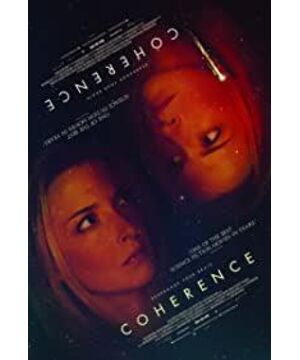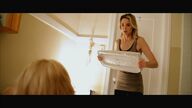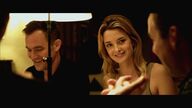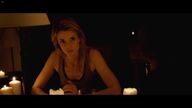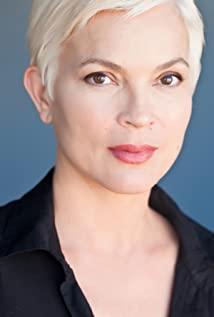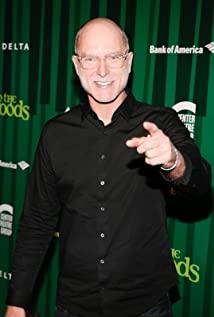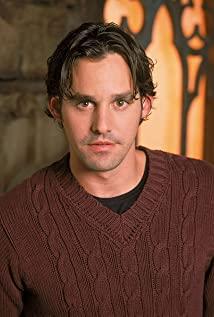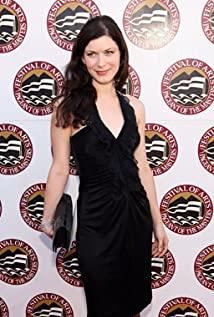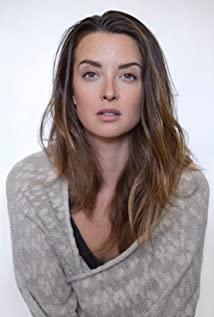As a comparison group, "The Night of the Comet", like "Hot Questions About Time Travel", belongs to a small pattern. Through the group play of a group of people, the nodes of the plot advance are found in the transformation of several spaces, and the multi-time and space are completed. complex narrative representation.
The background of the story is that a comet passes through the earth, and a group of friends who intersect each other in life (you and I are each other's EX and then arrange and combine) are partying. , and gradually entered the vortex of time and space chaos.
Since it is defaulted by the audience as a strictly set brain-burning film, the rules of setting must be judged according to the standards of brain-burning films.
At the beginning of the film, everyone entered the room as if nothing happened, and the director's point of view always followed everyone before HUGH and AMIR went out. In theory, no matter how the space was distorted, it was the first time these people talked about their experiences at the dining table. I didn't notice the distortion of time and space at all times, no matter how many mysteries they left to the audience in the dialogue.
If the narrative features EM as the protagonist (that is, the main point of view), her awakening may be one of the people in this group. The earliest (based on the group of people who stayed in the room at the beginning as the "same" group), if the screenwriter played a hooligan, the person who appeared in the first indoor scene already knew that the behavior of people who were distorted in time and space was "pretend" And "ulterior motives" (from the fact that they didn't know that AMIR would bring LAURIE and the situation where the two entered the room and greeted everyone) Obviously, the screenwriter will not take this kind of plot orientation, and HUGH and AMIR who came back after the first power outage are no longer "the same" group. If the time and space had been distorted when HUGH and KEVIN entered the house, their greetings would not have been so close and natural.
Since EM is the first awakening among the crowd, and distorted space means that theoretically, "people in one room left the room and entered a different room (space)" as the narrative sign of distorted space, then it is possible to distort the space. The person who has a space inversion must leave the house as a sign, otherwise, if he can go to the living room and go to the toilet, he can be replaced by an entrant from another space, then this standard is too lame and too playful with the audience, and there are too many explanations for suspense. It's changed... In addition, why is walking into different rooms a sign of distorted space, since the space is distorted, theoretically, there are countless numbers of different cars on the street? If there are countless numbers of cars, then taking a book and a ring to wake up EM and KVEIN can't be a significant sign of awakening, because if they see a different car every time, and hear a different car being smashed. Sound, see different rings, then the awakening of EM and KEVIN is even less referential (because if there are many groups of cars, even in different time and space, she may have "see ring" and "no ring" ", but also "seeing the ring" is not necessarily the same time and space)...
So in fact, the director has set some rules for transforming space for this film, but these rules are very limited and can only be explained by the director and the screenwriter themselves , in fact, no matter how the audience calculates many details, as long as you look for the bugs of the rules, you will feel that this kind of brainstorming analysis and induction is of little significance.
If it is explained from the audio-visual language, if the director really has this intention (you have to ask the director himself, otherwise it is an over-interpretation), in the multi-person dialogue before the power outage, they have several black screen flashes between several dialogues, This is a relatively common cutscene editing method, but the black screen time used in this film is slightly longer than the common black screen flash cut time. Different editing rhythms will cause different changes in the narrative purpose and effect (of course, this kind of There are many possibilities for the meaning of editing, and the meaning is sometimes not so precise and single), this is different from the general black screen flash cut, which will produce a "fracture" in the image, this method will generally be in some incoherent. The use of time (such as showing a person in a cell for a long period of time in a bored manner, with the camera position unchanged; or showing a city that has undergone decades of changes in empty shots and distractions. A tandem collection of point shots, if not using dissolves would probably use this longer black cut), if that's what the director intended, it can be explained that the previous space has been fractured and distorted for various reasons , and the space transformation standard is not only "in and out of the house", but I personally think that this is just a visual trick played by the director on the image. The narrative should still focus on the perspective of entering and leaving the house to change the space. If it is interpreted that the director is just distorting The later space collage is shown to the audience, then I think the director is playing the ultimate god of hooliganism...
In addition to the distortion of time and space, the theme of this film also shows the intersection of various interpersonal relationships of a group of people in the world. The troubles and emotions that come from the joys and sorrows, in terms of form and theme, this basically achieves the purpose of the director, but the details are a bit flawed.
Of course , this article does not mean to deny the film. There are many merits in the design of the performance. The overall rhythm and control are very good, but for the setting of the parallel universe, it is a setting that focuses on the sense of form with a natural bug, so I feel that the theme is very important. , atmosphere and combined with the performance of the character complex, I prefer "Terrorist Cruises" and "Hot Questions About Time Travel"
As for the explanation of Schrödinger's cat, according to my superficial understanding, there should theoretically be an intermediate state of "the cat is dead or not dead", or "the cat is both dead and immortal", but once an observer is introduced, this state is definite, so Everyone entering different rooms actually acts as different observers and affects the ending of the story in different spaces, and no matter whether EM passes through the row of houses or not, those houses (as long as they are brought by the camera) have an observation The audience to determine the state inside is the audience in front of the TV...
View more about Coherence reviews


